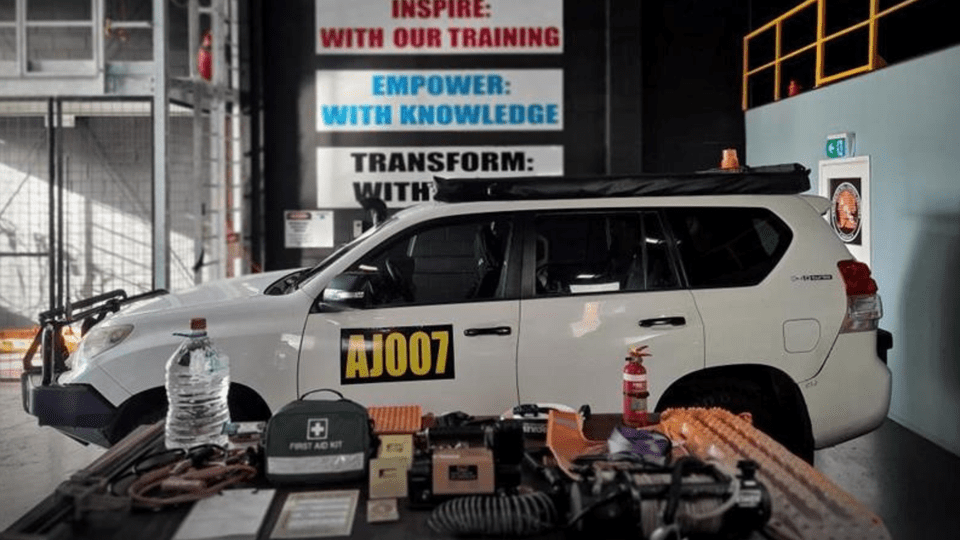Training for Safety: The Power of Practical Skills

From navigating rugged terrain in our 4WD training courses to mastering working at heights, gas testing, confined space entry, breathing apparatus, and fire training, this month has been packed with essential safety learning at the Australian Well Control Centre (AWCC).
These sessions weren’t just about ticking a compliance box, they were hands-on, high-impact opportunities to strengthen our safety culture and build the critical knowledge and confidence that keep teams safe every day.
4WD and Off-Road Training
Our 4WD training challenged participants to navigate unpredictable terrain, handle vehicle recovery, and manage risks in remote areas. These are vital skills for anyone travelling to or from well sites, exploration areas, or other off-road locations.
Knowing how to safely operate and recover a vehicle in rugged terrain can be the difference between a minor delay and a major incident.
Working at Heights — Confidence and Compliance
In our Working at Heights course, participants learned to use harnesses and fall-prevention systems correctly while identifying and mitigating common height-related hazards.
The focus was on real-world safety application, not just theory — ensuring every participant is confident, competent, and compliant when working above ground level.
Gas Testing and Confined Space Entry
We also reinforced one of the most important principles in hazardous work environments — testing before entry.
Our Gas Test Atmospheres training covered the correct use of gas detectors, interpretation of readings, and what actions to take if unsafe levels are detected.
This flowed directly into Confined Space Entry training, where participants practised entry procedures, communication protocols, and emergency planning, all key to ensuring safe operations in enclosed or restricted areas.
Operating Breathing Apparatus and Fire Training
Operating a Breathing Apparatus (BA) safely is a life-saving skill when working in oxygen-deficient or contaminated environments.
Participants learned about equipment checks, donning procedures, and managing air supply under pressure.
This was paired with Combined Fire Training, which explored fire behaviour, fire extinguisher types, and practical response drills.
The goal: to make sure that in a real-world emergency, our teams can respond quickly, calmly, and effectively.
The Importance of PPE — The Right Gear for the Job
Throughout all training sessions, Personal Protective Equipment (PPE) remained a central focus. PPE is the final line of defence against hazards — but only when it’s the right type, used the right way.
We reinforced several key points:
-
Always inspect PPE before and after use. Damaged or worn-out gear can fail when it’s needed most.
-
Gloves are a no-go when operating bench grinders or rotating machinery, as they can easily become entangled and cause severe injuries.
-
Respiratory protection must be properly fitted and sealed — facial hair, for example, can compromise mask effectiveness.
-
Safety glasses or face shields should always be worn when cutting, grinding, or working with pressurised systems.
-
High-visibility clothing and protective footwear are essential for worksite visibility and foot protection.
The message is clear, awareness and correct PPE use save lives. Wearing the wrong type can be as dangerous as wearing none at all.
At the end of the day, no matter where you’re working — on the ground or at height, in a vehicle or a high-risk zone — safety isn’t just a checkbox, it’s a mindset. It’s how we operate at AWCC.
Every course we deliver reinforces that mindset, ensuring every participant goes home safe, confident, and capable.
As part of National Safe Work Month, we asked our students: “What does safety mean to you?”
Their responses show the real impact of quality safety training, from gaining confidence on site to looking out for their mates.
Look after yourselves and your mates — because safety starts with all of us.
Learn more about AWCC’s nationally recognised safety and oil and gas training programs here.
Leave a Reply